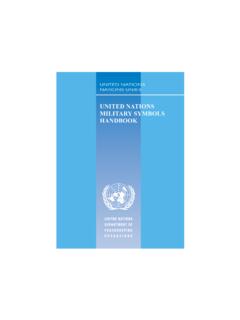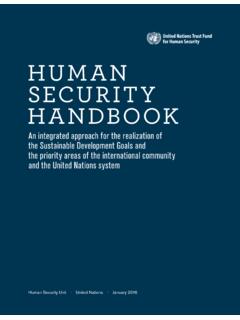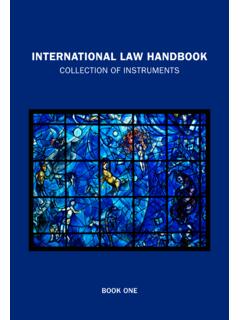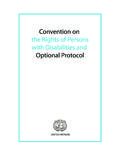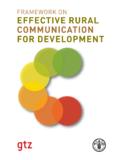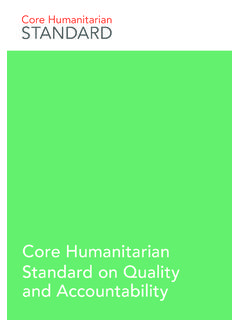Transcription of HAZARD CLASSIFICATION OF UNITED STATES MILITARY …
1 HAZARD CLASSIFICATION . OF. UNITED STATES MILITARY . EXPLOSIVES AND MUNITIONS. ARMY. DEFENSE AMMUNITION CENTER. LOGISTICS REVIEW. and TECHNICAL ASSISTANCE. OFFICE. REVISION 15. JUNE 2012. Instructions for receiving hard or electronic copies of this publication may be obtained by sending an E-Mail request to ARMY DEFENSE AMMUNITION CENTER MCALESTER, OK 74501-9053. HAZARD CLASSIFICATION OF MILITARY EXPLOSIVES AND MUNITIONS. REVISION 15, 1 JUNE 2012. 1. This publication (GUIDE) provides THE USER IN THE field with a ready "user friendly" consolidated reference to basic data and regulatory criteria. HAZARD CLASSIFICATION , physical security , marking, transportation and storage data and criteria for selected conventional ammunition and explosive items, guided missiles and rockets, current at time of printing, are presented in this listing. 2. The data and criteria contained in this publication are primarily derived from: Joint HAZARD CLASSIFICATION System (JHCS) data base Federal Logistics Information System data on Compact Disc (FED LOG) (monthly).
2 Title 49, Code of Federal Regulations (49 CFR). 2008 Emergency Response Guidebook (ERG2008). Regulatory publications as identified in the specific Appendices This publication (GUIDE) is not intended to supersede, contravene, or modify any of these publications or any other DoD or service criteria. Comments and suggestions regarding this publication are encouraged and should be forwarded to SJMAC-AV, US. Army Defense Ammunition Center, 1 C Tree Road, Building 35, McAlester, OK 74501-9053. They may also be communicated via e-Mail to or by FAX to DSN 956- or commercial (918) 420-, ext. 6172. UPTON R. SHIMP, PhD. DIRECTOR DEFENSE AMMUNITION CENTER.. JOINT HAZARD CLASSIFICATION SYSTEM (JHCS). 1. The JHCS database is the official Department of Defense (DoD) database for final HAZARD classified ammunition and explosives. The US Army Defense Ammunition Center (DAC), Directorate for USATCES (US Army Technical Center for Explosives Safety) at McAlester, OK manages the JHCS.
3 For the Department of Defense Explosives Safety Board (DDESB). Comments, questions and suggestions regarding the JHCS should be submitted to SJMAC-EST, US Army Defense Ammunition Center, 1 C Tree Road, Building 35, McAlester, OK 74501-9053. They may also be communicated via E-Mail to or by FAX to DSN 956- or commercial (918) 420-, extension 8758. 2. The JHCS is accessible through the "DAC Home Page" at A. Common Access Card (CAC) is required to access the DAC Home Page. In the left column under Available Products select "JHCS". This will take you to the home page for the Explosives Safety Information Data Base ESIDB (ESMAM & JHCS) which provides access to the Joint HAZARD CLASSIFICATION System JHCS database. NOTE: The JHCS is a listing of items containing HAZARD Class 1 materials. Items with no Class 1 material will not normally be found in the JHCS. Some items in the JHCS may not be classified as a HAZARD Class 1 due to an overriding predominant HAZARD of another class.
4 These items with an overriding predominant HAZARD ( ) will still display a Storage Compatibility Group (SCG) code. This SCG code is provided to assist in the storage of the item with other HAZARD Class 1 items only and is to be ignored for transportation purposes. ii TABLE OF CONTENTS. Introduction i Joint HAZARD CLASSIFICATION System (JHCS) ii Table of Contents iii General Descriptions Relating to Ammunition and Explosives Supply Category of Material Code (SCMC) (Classes of Supplies) iv Federal Supply Classes within Federal Supply Group 13 - Ammunition and Explosives v Description of Data Elements for the HAZARD CLASSIFICATION Listing (HCL) by DODIC vii HAZARD CLASSIFICATION Listing (HCL) by DODIC 1-148. HCL by DODIC Notes 148. Non-Explosive Items by DODIC 149-153. Appendix A - HAZARD Class and Division (HD) Identification A1. Appendix B - Storage Compatibility Group (SCG) Identification B1. Appendix C - HAZARD Class 1 UNITED Nations Identification Numbers, Proper Shipping Names, with HD and CG C1.
5 Appendix D - Controlled Inventory Item Code (CIIC) Identification D1. Appendix E - Storage Compatibility Group (SCG) Mixing Chart for Storage E1. Appendix F - HAZARD Class and Division (HD) Label and Placard Identification F1. Appendix G - Carriage by Rail Car and Public Highway Segregation Table for Hazardous Materials G1. Appendix H - Rail Car and Public Highway Compatibility Table for HAZARD Class 1 (Explosive) Materials H1. Appendix I - Emergency Response Guide 112: Explosives - Division , , , or ; Class A or B I1. Appendix J - Emergency Response Guide 114: Explosives - Division ; Class C J1. Appendix K - Authorized Mixed Stowage for Explosives Transported by Vessel K1. Appendix L - Maximum Credible Event (MCE) for HD Items Listed in this YB L1. Appendix M - Chemical HAZARD Symbol Requirements M1. Appendix N - Weights and Measures Conversion Chart N1. Appendix O - Acronyms/Abbreviations O1. Appendix P - Federal Supply Condition Code (SCC) Definitions P1.
6 Appendix Q - AmmoHelp Q1. This publication is available on the DAC Home Page at " ". CAC required for web access. For hard copy availability of this publication see bottom of front cover or bottom of inside back cover. iii SUPPLY CATEGORY of MATERIAL CODE (SCMC) (CLASSES of SUPPLIES). from DA Pam 708-2, 23 May 2008, Table 3-42. There are ten (10) CODES/CLASSES of supplies that are used to identify different basic categories of items. These basic categories are identified by either a Roman or Arabic character (I thru X or 1 thru 0/10) and it is the first of a two (2) position/character identification/authorization system. A number of subclasses (a second character) further identifies the kind of equipment the item is used on or the type of unit allowed to order it within each CODE/CLASS. CODE CLASS subclasses . 1 I Subsistence A,C,R,S or W. 2 II Clothing, Kits, Tools & Household Equipment A,B,D,E,F,G,H,K,L,M,N,O,P,Q,T,U,W,Y or Z. 3 III POL (fuel, antifreeze, lubricants & oil) 1,2,3,4,5,6 or 7.
7 4 IV Construction Material X. 5 V AMMUNITION1 A,L,N,W or Z. 6 VI Personal Demand Items X. 7 VII Major End Items A,B,D,G,H,K,L,M,N,O,P,Q,U,W,Y or Z. 8 VIII Medical Material 0-9. 9 IX Repair Parts A,B,D,F,G,H,K,L,M,N,O,P,Q,T,U,W,Y or Z. 0/10 X Economic Development & Agriculture. Non Mil. X. 1. AMMUNITION - Ammunition of all types (including chemical, radiological and special weapons) bombs, explosives, land mines, fuses, detonators, pyrotechnics, missiles, rockets, propellants, and other associated items. subclasses for CODE/CLASS 5/V - AMMUNITION. A - Air (munitions delivered by aircraft or aircraft weapons systems). L - Missiles (includes guided missile ammunition items). N - Special Weapons (includes nuclear and thermonuclear munitions). W - Ground (conventional munitions consist of chemical, smoke, illuminating, incendiary, riot control and improved conventional munitions). Z - Chemicals (chemical toxic munitions). Expanded definitions for the ten CLASSES and definitions for the subclasses can be found in DA Pam 708-2, Table 3-42.
8 Iv FEDERAL SUPPLY CLASSES within FEDERAL SUPPLY GROUP 13. AMMUNITION and EXPLOSIVES. from Federal Supply Class Reference Guide - Cataloging Handbook H2. The Handbook provides Federal Supply Group and Class (FSG/FSC) numbers with a brief description of the type of items/item names included/excluded. Note: Excluded from this group are items specially designed for nuclear ordnance application. 1305 Ammunition, through 30MM. 1310 Ammunition, over 30MM up to 75MM. 1315 Ammunition, 75MM through 125MM. 1320 Ammunition, over 125MM. 1325 Bombs 1330 Grenades 1336 Guided Missile Warheads and Explosive Components 1337 Guided Missile and Space Vehicle Explosive Propulsion Units, Solid Fuel; and Components 1338 Guided Missile and Space Vehicle Inert Propulsion Units, Solid Fuel; and Components 1340 Rockets, Rocket Ammunition and Rocket Components 1345 Land Mines 1346 Remote Munitions Note: Munitions items/systems that are not held by the soldier but are deployed for future activation.
9 They may be put in place separately by the soldier or delivered from vehicles or aircraft by mechanical distribution methods. They may be command controlled or may use self-initiated firing systems that do not require soldier monitoring. All items in this class can be armed/disarmed remotely. 1350 Underwater Mine and Components, Inert 1351 Underwater Mines and Components, Explosive 1352 Underwater Mine Disposal Inert Devices Note: Version of Underwater Mine Disposal Explosive Device without destructive charge. Intended for underwater mine hunting and reconnaissance. May also be used for training purposes. 1353 Underwater Mine Disposal Explosive Devices Note: Complete explosive devices, including destructive charge. It is fired, guided to target and detonated from a vessel or other remote site. 1355 Torpedos and Components, Inert 1356 Torpedos and Components, Explosive 1360 Depth Charges and Components, Inert 1361 Depth Charges and Components, Explosive 1365 MILITARY Chemical Agents v 1367 Tactical Sets, Kits, and Outfits Note: A collection of items, which are used for a specific purpose.
10 Each collection must include at least one item of ordnance classified in Group 13. Ordnance may be non-lethal (as defined in the Department of Defense Direcive ). These sets, kits and outfits may include such items as uniforms, weapons, body armor, and the like. By themselves, each of these components belongs in an FSC other than 1367. 1370 Pyrotechnics 1375 Demolition Materials 1376 Bulk Explosives 1377 Cartridge and Propellant Actuated Devices and Components Note: This class includes safety-in-flight explosive items, consisting of a quantity of propellant (either encased in a cartridge or in molded form) and a means of activation, designed to be inserted into or attached to one or more devices to provide the energy required to operate devices requiring a time delay, or not requiring a time delay, in their operating sequence. Also included are devices designed to utilize energy generated by the items described above. 1380 MILITARY Biological Agents Note: FSC 1380 CANCELLED ON 100103 MILITARY Biological Agents.

